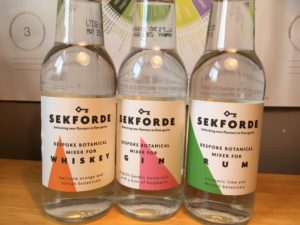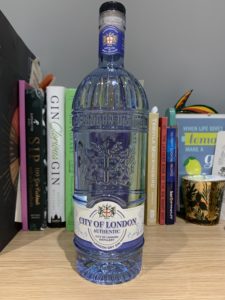 As you may know from this blog or my social media, I work in central London. Just down the road, in fact, from the City of London distillery. Whilst coronavirus might mean we can’t travel or go anywhere, a fantastic deal online meant I pity-bought myself a bottle of their Authentic gin. The Authentic gin is the first gin the distillery launched back in 2012, becoming the first gin distilled in the city of London. The gin itself is pretty simple with just seven botanicals – classic juniper, coriander seed, angelica root and liquorice root alongside a load of citrus peel (orange, lemon and grapefruit). Distilled in a pair of 200l litre stills named Jennifer and Clarissa (after The Two Fat Ladies), the Authentic gin launched and defined the brand that now boasts an impressive nine gins (in fact, I’ve already reviewed their citrus led Six Bells and the Square Mile gin).
As you may know from this blog or my social media, I work in central London. Just down the road, in fact, from the City of London distillery. Whilst coronavirus might mean we can’t travel or go anywhere, a fantastic deal online meant I pity-bought myself a bottle of their Authentic gin. The Authentic gin is the first gin the distillery launched back in 2012, becoming the first gin distilled in the city of London. The gin itself is pretty simple with just seven botanicals – classic juniper, coriander seed, angelica root and liquorice root alongside a load of citrus peel (orange, lemon and grapefruit). Distilled in a pair of 200l litre stills named Jennifer and Clarissa (after The Two Fat Ladies), the Authentic gin launched and defined the brand that now boasts an impressive nine gins (in fact, I’ve already reviewed their citrus led Six Bells and the Square Mile gin).
cocktails
Never Never Juniper Freak gin
Note: This post contains affiliate links marked as [Ad], if you click on this and buy a bottle of gin then I will receive a small commission.
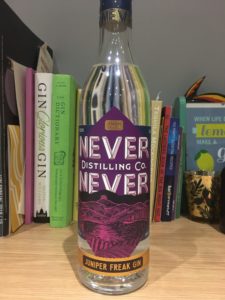
Back in June, I visited Junipalooza and finally got a chance to meet the Never Never Distilling Co. Based in Adelaide, Australia, they say they embrace the Australian spirit of adventure (is that a thing?) and produce some of the most juniper forward gins on the market. This inspires the name Never Never, which TBH just makes me think about Neverland, which is kinda of the point – they celebrate those that dare to be different and seek more from life. Started by friends George (the science whizz), Sean (sales and marketing expert), and Tim (head distiller), the three came together and are currently based at the home of Big Shed Brewing, but long for their own space in the outback. They currently make three key gins, their ‘normal’ gin is Triple Juniper (which funnily enough is juniper heavy), their Southern Strength (52% ABV) and then today’s gin, the Juniper Freak which is an ode to the juniper berry. This gin sits at 58% which gives it a punch and helps to amp up the oily juniper – the description for this might be my favourite ever: “It’s a seriously big gin, but hey, we’re not here to fuck spiders”. I don’t know if that’s an Aussie saying but I love it. The Juniper Freak won Australia’s Best Navy gin at the 2019 World Gin Awards, so how does it taste?
Darnley’s Smoke and Zest gin
Note: Darnley’s sent me a sample of their new gin to try, but as always, I’ll let you know what I really think.
 For today’s tasting we are travelling back up north to Scotland, specifically the east coast of Fife to a town called Kingsbarn to try the newest in the Cottage Series released by Darnley’s. At the 13th-century Wemyss Castle, Mary Queen of Scots met her future husband Lord Darnley – an occasion that later inspired the Wemyss family (who already run an established whisky distillery) to renovate a cottage and try their hand at gin distilling. They plumped for a London Dry gin style, first steeping their botanicals in a four times distilled neutral grain spirit, before distilling it in their 300l pot still for a fifth time. Their core range of gins started with their Original gin, inspired by the wild elderflower growing on their estate, which creates a light, floral gin. They then went on to make their Spiced gin which brings flavours of pine needles, peppercorns, cloves, rosemary and cardamom. They then created a Navy Strength edition of their Spiced gin, bringing it up to 57% and adding in more juniper to allow the flavours to shine even at this higher ABV. Because having three spirits isn’t enough, Darnley’s are now creating limited edition gins, known as the Cottage Series. These releases are inspired by the botanicals growing on their estate and beyond. The first, launched in July 2018, featured sloe berries, rosehip and elderberry and was originally named the Very Berry edition. Today we try their second release, the Smoke and Zest. For this, their distiller Scott Gowans has taken the home grown barley that is used in their single malt whisky and smoked it in his family’s smoker with pine wood chips. They balance the smoke out with rowanberry and coriander (grown at the distillery) for a touch of sweetness and Turkish orange peel for that tang. The inspiration for this really comes from rowanberries, also known as Mountain Ash and it was this name that inspired Scott to look for something smokey to add to the citrus. The idea to smoke the barley over pine chips came from the production of Lapsang Souchong tea, to create what they call an unusual gin with juniper at its heart. So, how does it taste?
For today’s tasting we are travelling back up north to Scotland, specifically the east coast of Fife to a town called Kingsbarn to try the newest in the Cottage Series released by Darnley’s. At the 13th-century Wemyss Castle, Mary Queen of Scots met her future husband Lord Darnley – an occasion that later inspired the Wemyss family (who already run an established whisky distillery) to renovate a cottage and try their hand at gin distilling. They plumped for a London Dry gin style, first steeping their botanicals in a four times distilled neutral grain spirit, before distilling it in their 300l pot still for a fifth time. Their core range of gins started with their Original gin, inspired by the wild elderflower growing on their estate, which creates a light, floral gin. They then went on to make their Spiced gin which brings flavours of pine needles, peppercorns, cloves, rosemary and cardamom. They then created a Navy Strength edition of their Spiced gin, bringing it up to 57% and adding in more juniper to allow the flavours to shine even at this higher ABV. Because having three spirits isn’t enough, Darnley’s are now creating limited edition gins, known as the Cottage Series. These releases are inspired by the botanicals growing on their estate and beyond. The first, launched in July 2018, featured sloe berries, rosehip and elderberry and was originally named the Very Berry edition. Today we try their second release, the Smoke and Zest. For this, their distiller Scott Gowans has taken the home grown barley that is used in their single malt whisky and smoked it in his family’s smoker with pine wood chips. They balance the smoke out with rowanberry and coriander (grown at the distillery) for a touch of sweetness and Turkish orange peel for that tang. The inspiration for this really comes from rowanberries, also known as Mountain Ash and it was this name that inspired Scott to look for something smokey to add to the citrus. The idea to smoke the barley over pine chips came from the production of Lapsang Souchong tea, to create what they call an unusual gin with juniper at its heart. So, how does it taste?
Warner Edwards Farmed & Foraged Gin
Note: I pester Emile and Olivier over at Gin Foundry a lot and at Junipalooza they kindly handed me an apple mint plant and told me to be patient. Two months later, they have now gifted me a little bottle of gin to go with the garnish, but as always, I’ll let you know what I think.
 Even newbies to the gin game should recognise Warner Edwards, if not, they are basically the people that made the first rhubarb gin. They also make lots of other yummy gins, I’m particularly in love with their Honeybee gin with lemon, honey and a splash of hot water whenever I have a cold. They are very big on sustainability and grow many of their own botanicals (including the honey from their own bees) from their farm. They use water from their spring and are believers in good things coming to those that wait; no over harvesting here. Instead they try to put more back into the soil than they take. They’ve been besties with the Gin Foundry crew for a while, being one of the few brands that have been involved with Junipalooza from the beginning, and they have now teamed up for a limited edition gin. They gave the team at Warner Edwards a challenge – only use botanicals within a three mile bee flight of the distillery. They wanted to look at not just the botanicals that work together, but how the environment can shape a flavour profile and working with the land around you from planting through to harvesting.
Even newbies to the gin game should recognise Warner Edwards, if not, they are basically the people that made the first rhubarb gin. They also make lots of other yummy gins, I’m particularly in love with their Honeybee gin with lemon, honey and a splash of hot water whenever I have a cold. They are very big on sustainability and grow many of their own botanicals (including the honey from their own bees) from their farm. They use water from their spring and are believers in good things coming to those that wait; no over harvesting here. Instead they try to put more back into the soil than they take. They’ve been besties with the Gin Foundry crew for a while, being one of the few brands that have been involved with Junipalooza from the beginning, and they have now teamed up for a limited edition gin. They gave the team at Warner Edwards a challenge – only use botanicals within a three mile bee flight of the distillery. They wanted to look at not just the botanicals that work together, but how the environment can shape a flavour profile and working with the land around you from planting through to harvesting.
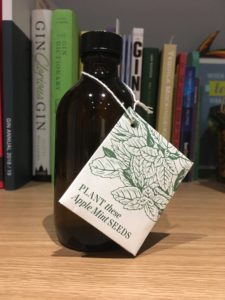
This approach fits with the Warner Edwards ethos, but also presented a challenge – if you can’t use citrus fruits, coriander seeds or angelica root, what do you put in your gin? Luckily within the three mile radius they have a plethora of goodies including lemon thyme, lemon verbena, lavender, chamomile leaves, bee pollen, dandelion root, toasted applewood and some homegrown green juniper (note: some juniper is also bought in from further away, but they understand that real gin actually tastes of juniper so needed to up the game slightly). Each bottle is preceded with a pack of seeds so you can grow your own apple mint garnish. My seeds seem to be struggling, but luckily I have a pregrown one to fall back on. So, how does it taste?
City of London Distillery Square Mile gin
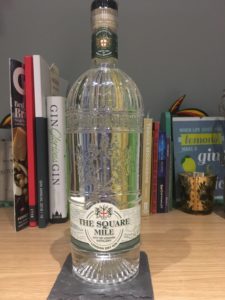 A few weeks ago, I went to the City of London Distillery for one of their distillery tours (which I recommend, it was great fun on a Wednesday night [note: I paid for this myself, it wasn’t gifted]). As we left, obviously I bought myself a bottle of gin. The City of London Distillery opened in 2012 on Bride Lane (literally five minutes from my office) with their traditional London Dry gin which was quickly followed by the Square Mile gin that I am trying today. Since then, they have also launched a Sloe gin, an Old Tom gin, their Christopher Wren gin, and a number of flavoured gin such as the Six Bells gin they launched with Craft Gin Club. The Square Mile gin is distilled with juniper, coriander seeds, fresh orange and lemon amongst others and won a Double Gold Award at the San Francisco World Spirits Competition in 2017 which is a pretty big deal. Bottled at 47.3% ABV, it is also the strongest gin they make (I am slightly surprised they haven’t added a navy strength gin to their family, but hey, there’s still time).
A few weeks ago, I went to the City of London Distillery for one of their distillery tours (which I recommend, it was great fun on a Wednesday night [note: I paid for this myself, it wasn’t gifted]). As we left, obviously I bought myself a bottle of gin. The City of London Distillery opened in 2012 on Bride Lane (literally five minutes from my office) with their traditional London Dry gin which was quickly followed by the Square Mile gin that I am trying today. Since then, they have also launched a Sloe gin, an Old Tom gin, their Christopher Wren gin, and a number of flavoured gin such as the Six Bells gin they launched with Craft Gin Club. The Square Mile gin is distilled with juniper, coriander seeds, fresh orange and lemon amongst others and won a Double Gold Award at the San Francisco World Spirits Competition in 2017 which is a pretty big deal. Bottled at 47.3% ABV, it is also the strongest gin they make (I am slightly surprised they haven’t added a navy strength gin to their family, but hey, there’s still time).
Gwyr Rhosili gin
Note: The lovely team at Gwyr gin sent me a bottle to try, but as always I will let you know what I really think.
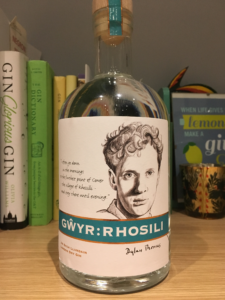 What is Gwyr Rhosili gin?
What is Gwyr Rhosili gin?
If you want to know about Gwyr gin, then I will point you to my posts on their original gin and their Pinwydd edition. Today, however, we are drinking their newest edition to the family, the Rhosili gin. This has been designed with the Dylan Thomas Estate to commemorate the poet’s links with Gower and Rhosili (his body is interred around the coastline in Laugharne). Thomas is most famous for poems such as Do not go gentle into that good night, a poem that has been quoted in numerous shows and films like Doctor Who and Independence Day. So how is this gin different to their others? Where their original gin focuses on pink grapefruit and fennel, the Rhosili edition features foraged gorse flowers, fresh lime zest, sea buckthorn (a botanical that seems to be appearing more and more) and linden flowers. Linden flowers have been used by herbalists for all sorts of things – coughs, colds, high blood pressure and migraines and research has shown that the flowers may have properties that help prevent damage to your liver. Which surely can only be a good thing when added to something that is proven to damage your liver? Please note I am not saying that drinking this is good for you in any way, as always, please drink responsibly. So, moving on, how does it taste?
Gŵyr Pinwydd gin
Note: Siân kindly sent me a bottle of their new gin to try, but as always I will let you know what I really think.

You might have seen my post about Gŵyr‘s first gin (if not, you can catch up here) and today we try their new seasonal offering. What does Pinwydd mean I hear you ask? Well, luckily my Welsh is brilliant (and Siân translated it for me) and I can tell you it means “pine trees”. If you’re as smart as I hope you are, you might have guessed that this gin features pine tips as the new flavour. The pine tips are foraged from North Gower – a very different region to South Gower where the team live and distill. They gathered their ingredients and made up their first batch, which they quickly discovered was “too piney” and after some experimenting they found that pink peppercorns were the answer to balancing the flavours. This gin is the first in what they hope will be a seasonal range showcasing what the region has to offer , and this is the ‘winter’ edition. Other seasonal botanicals include orange pulp, zest and cranberry, on top of their original recipe of juniper, angelica, coriander, orris and lemon zest. So, how piney does this gin really taste?
Gŵyr gin
Note: I met the lovely team behind Gŵyr gin at Junipalooza and they kindly sent me a bottle to try, as always I’ll let you know what I think.
 Gŵyr gin (pronounced Gower for us non-Welsh language speakers) hails from South Wales. They keep the recipe fairly simple and use only eight botanicals – juniper meets lemon and pink grapefruit balanced with bronze and green fennel. They aim to “capture the freshness of the sea” – a theme which carries through to their branding and distinctive navy-inspired label. As they are based just outside of Swansea, the hints of copper on the label hark back to the 18th and 19th century when Swansea was famous for its copper industry.
Gŵyr gin (pronounced Gower for us non-Welsh language speakers) hails from South Wales. They keep the recipe fairly simple and use only eight botanicals – juniper meets lemon and pink grapefruit balanced with bronze and green fennel. They aim to “capture the freshness of the sea” – a theme which carries through to their branding and distinctive navy-inspired label. As they are based just outside of Swansea, the hints of copper on the label hark back to the 18th and 19th century when Swansea was famous for its copper industry.
Sekforde mixers
Note: I contacted Sekforde and they kindly sent me some samples to try, but as always I’ll let you know exactly what I think.
Sekforde mixers were created by husband and wife team Tom and Talula and they take a different approach to most ranges of mixers. Most ranges go for different flavours which complement different drinks in different ways, but here they have created three botanical mixers, each designed to complement a different spirit. Each mixer is 100% natural and under 40 calories per 200ml bottle. So what are they?
Archangel Gin
Note: I contacted Archangel and they kindly sent me a sample to try, as always I’m still going to be honest about the taste
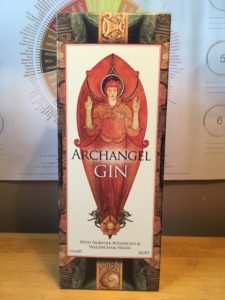 Archangel gin hails from Norfolk and has just celebrated its first birthday, being first batched up on 2 February 2017. They distil their gin on a working farm just a hundred yards from St. Peter’s church which dates back to the 14th century. The farm has been in the Archangel family for the last 60 years and they are Norfolk born and bred and believing in small scale productions using local labour and locally sourced ingredients. The juniper and sea buckthorn are grown on site and are with blended 11 other botanicals including verbena and orange peel.
Archangel gin hails from Norfolk and has just celebrated its first birthday, being first batched up on 2 February 2017. They distil their gin on a working farm just a hundred yards from St. Peter’s church which dates back to the 14th century. The farm has been in the Archangel family for the last 60 years and they are Norfolk born and bred and believing in small scale productions using local labour and locally sourced ingredients. The juniper and sea buckthorn are grown on site and are with blended 11 other botanicals including verbena and orange peel.
